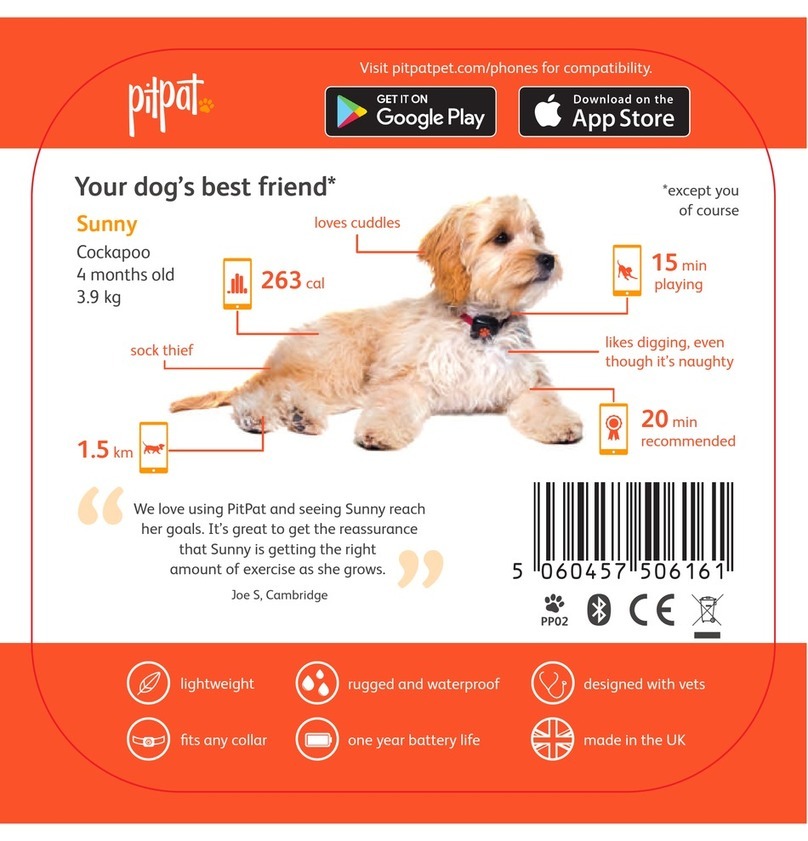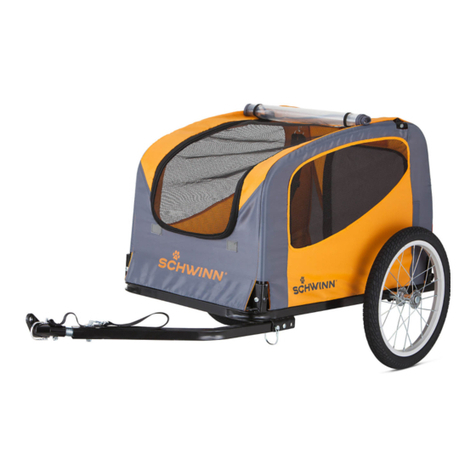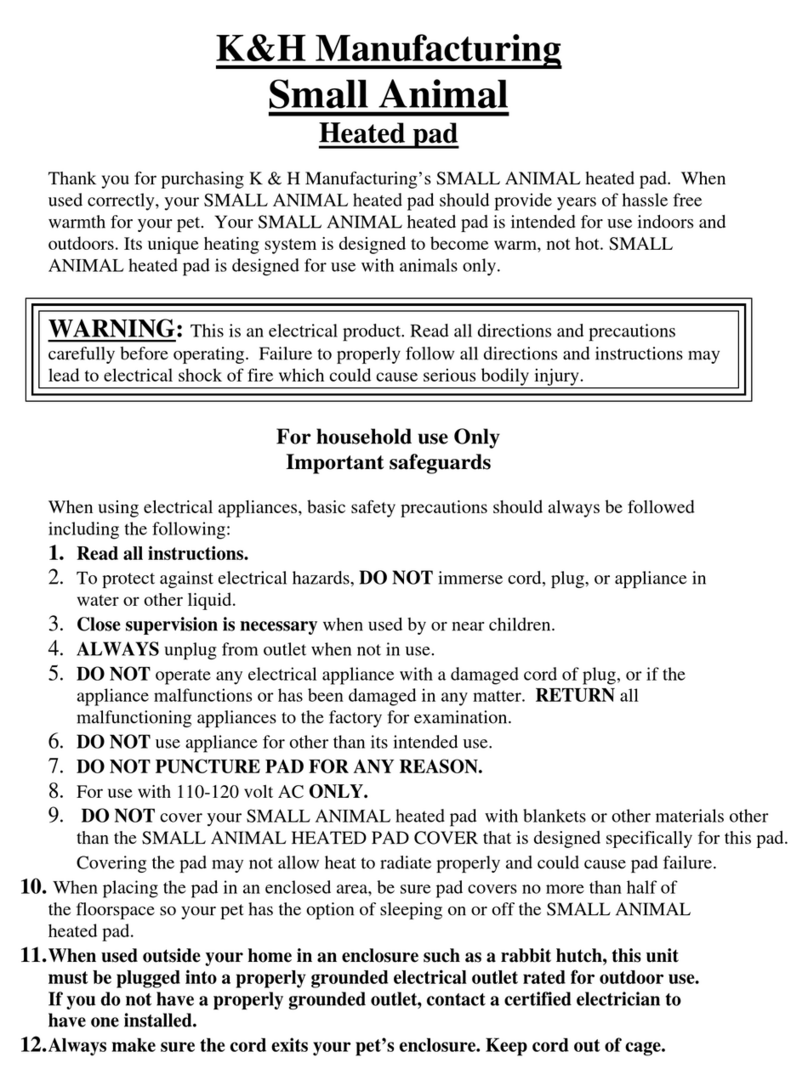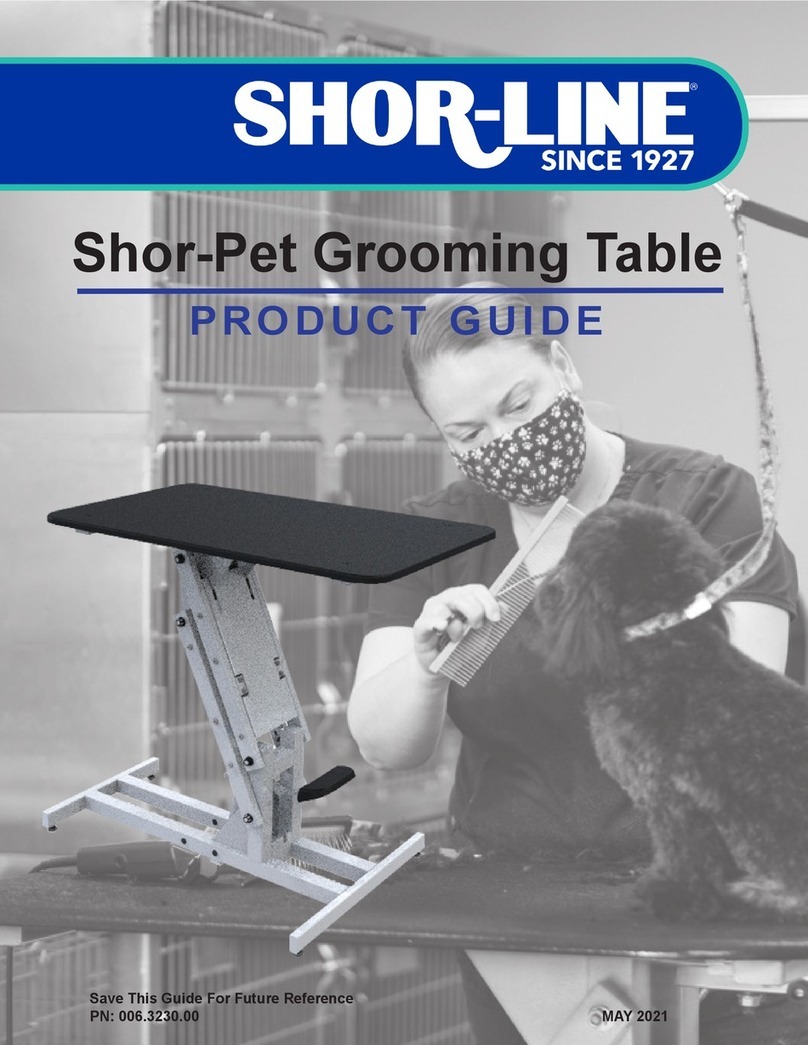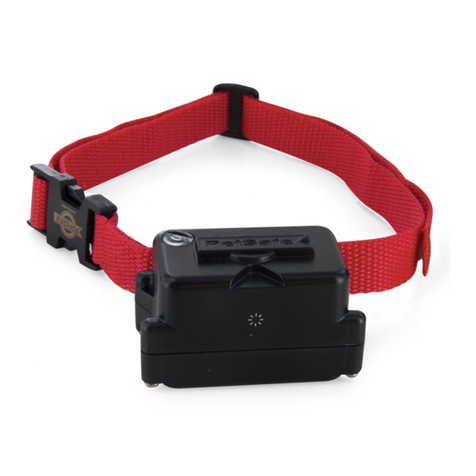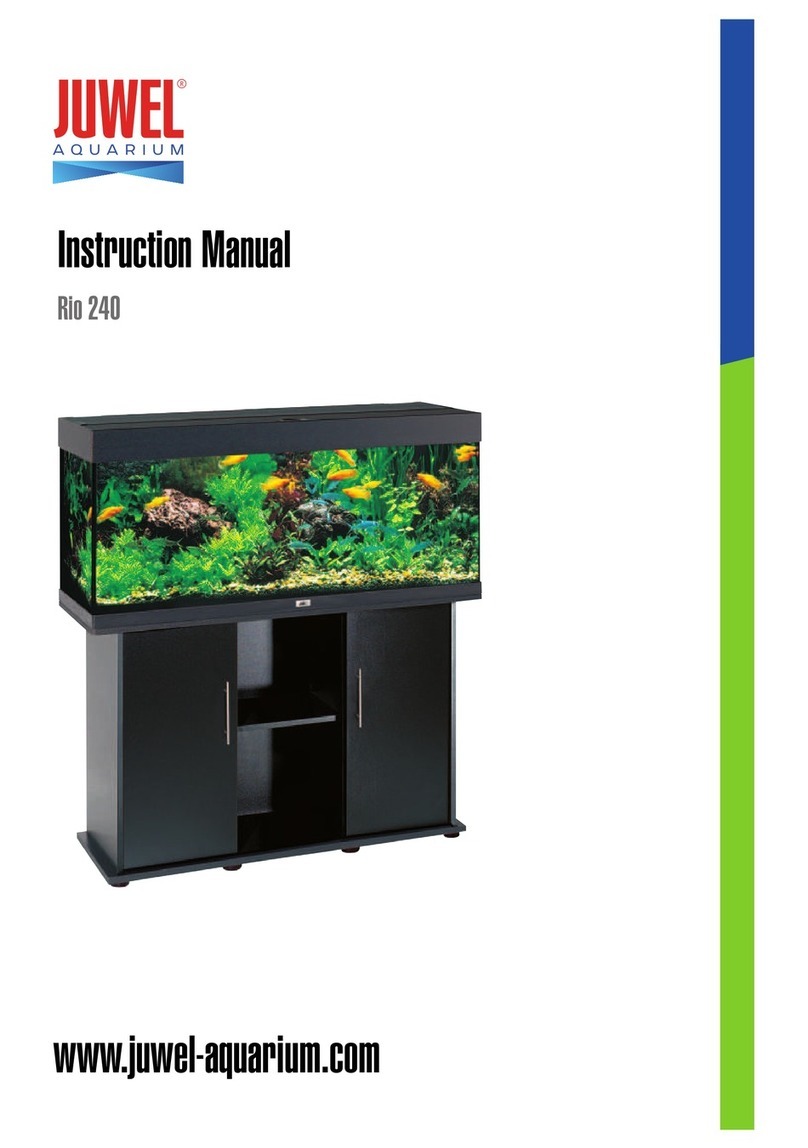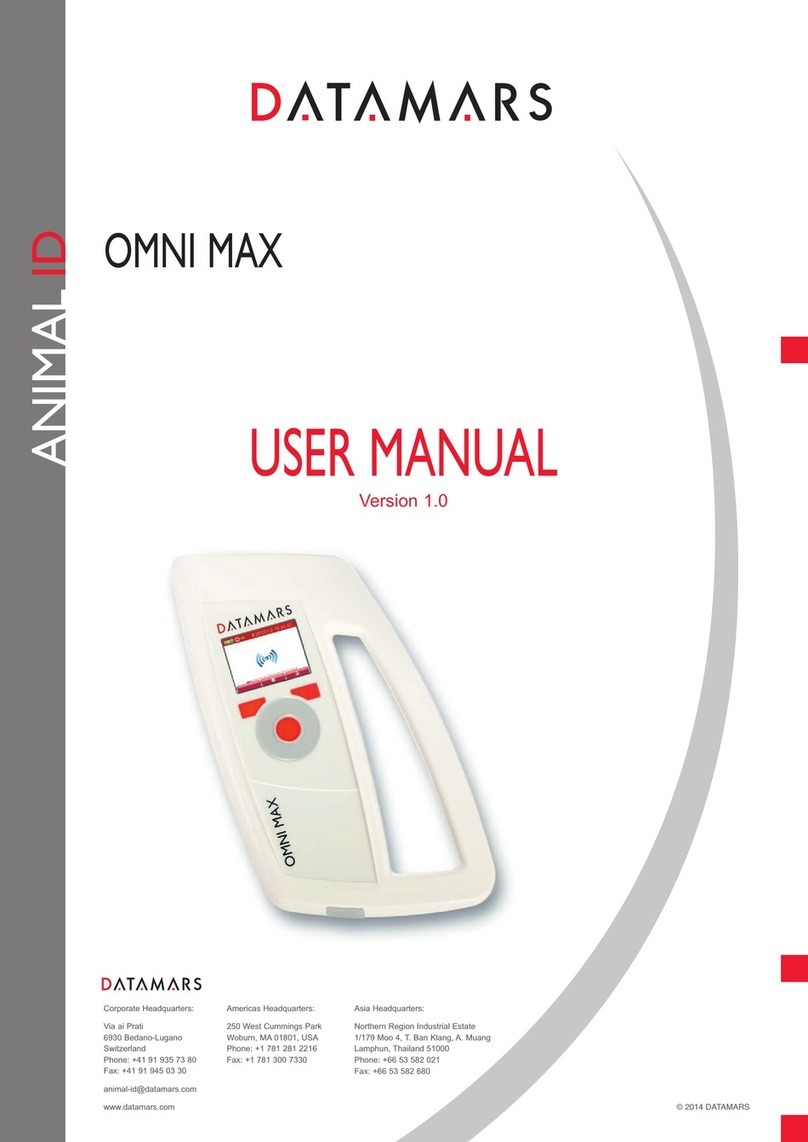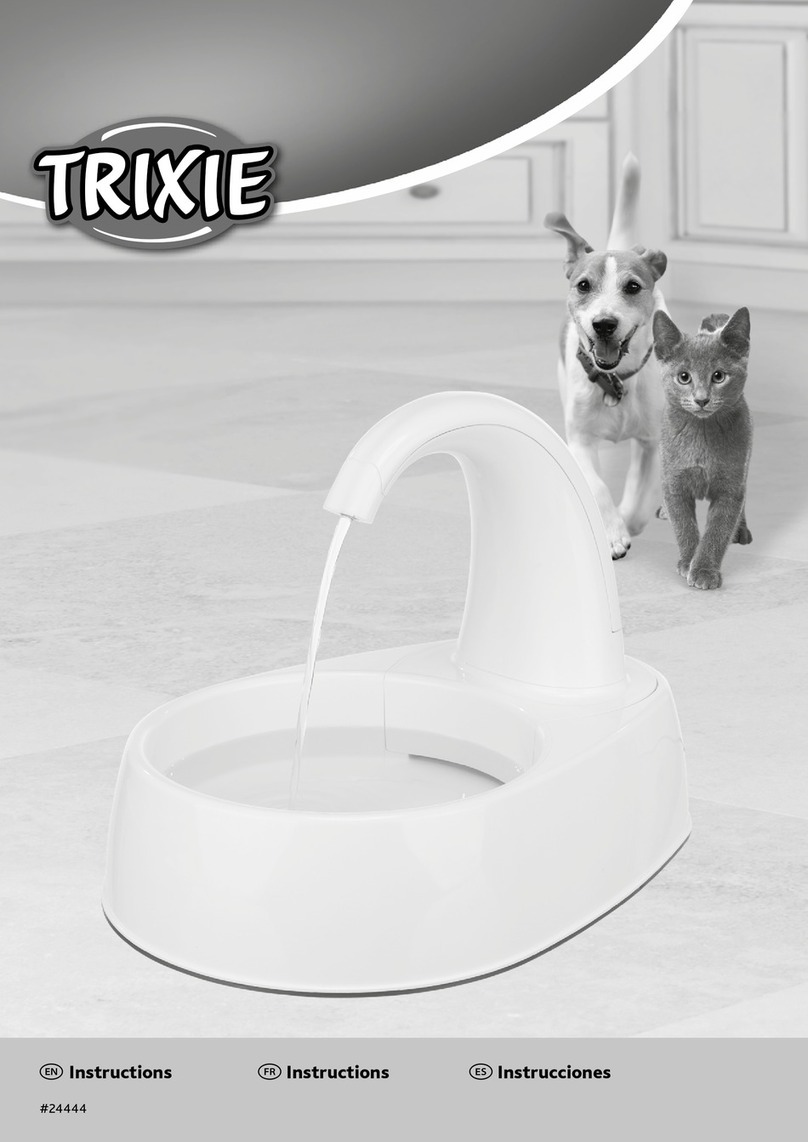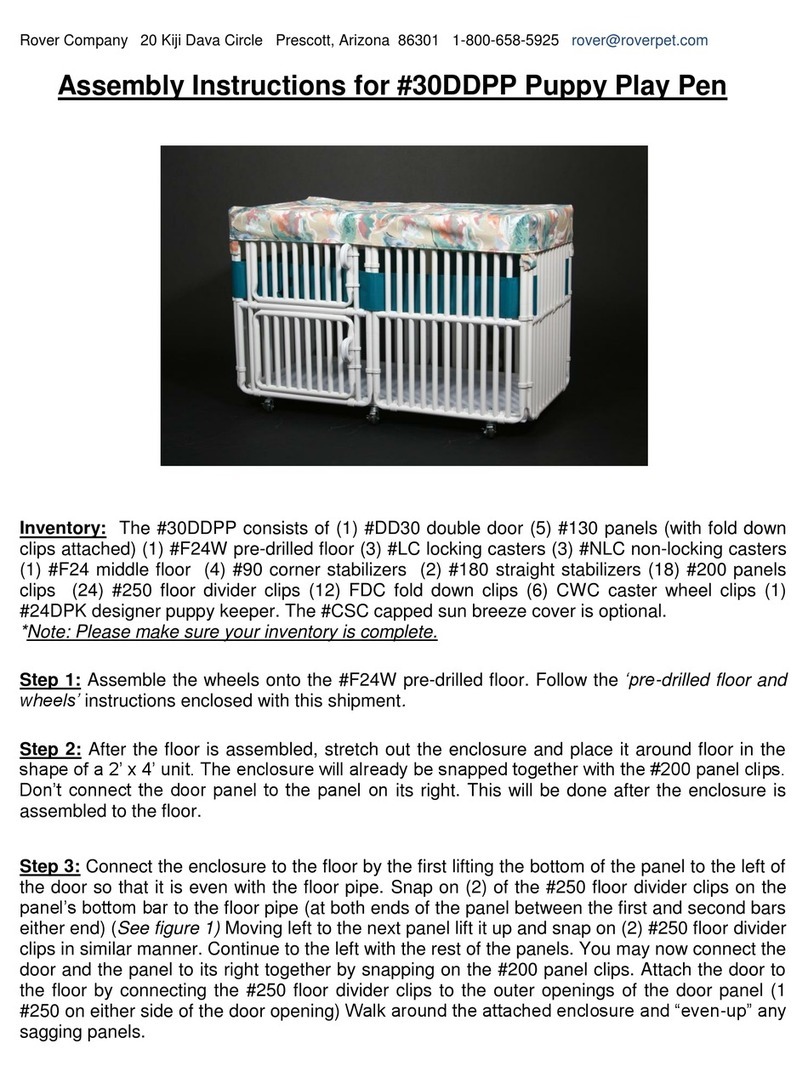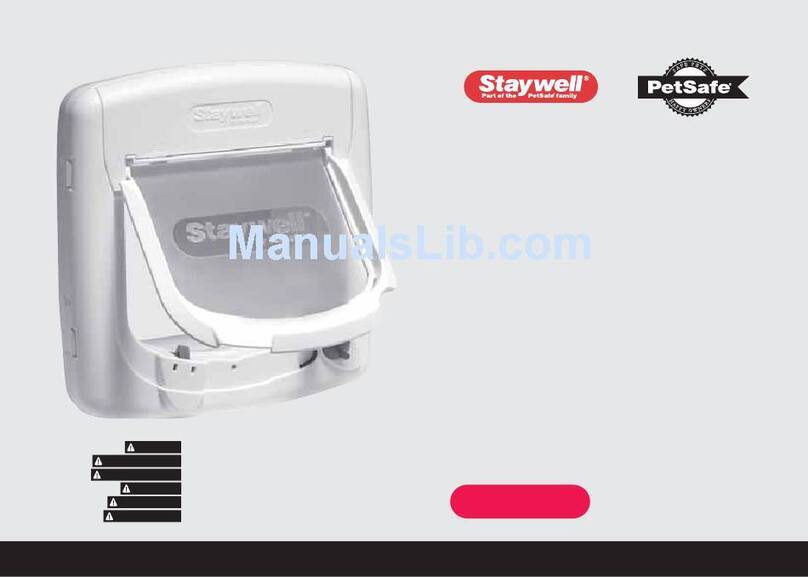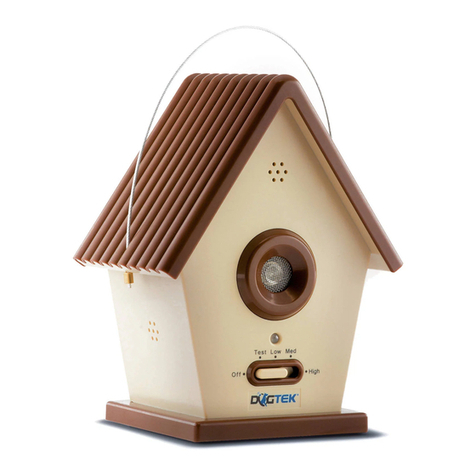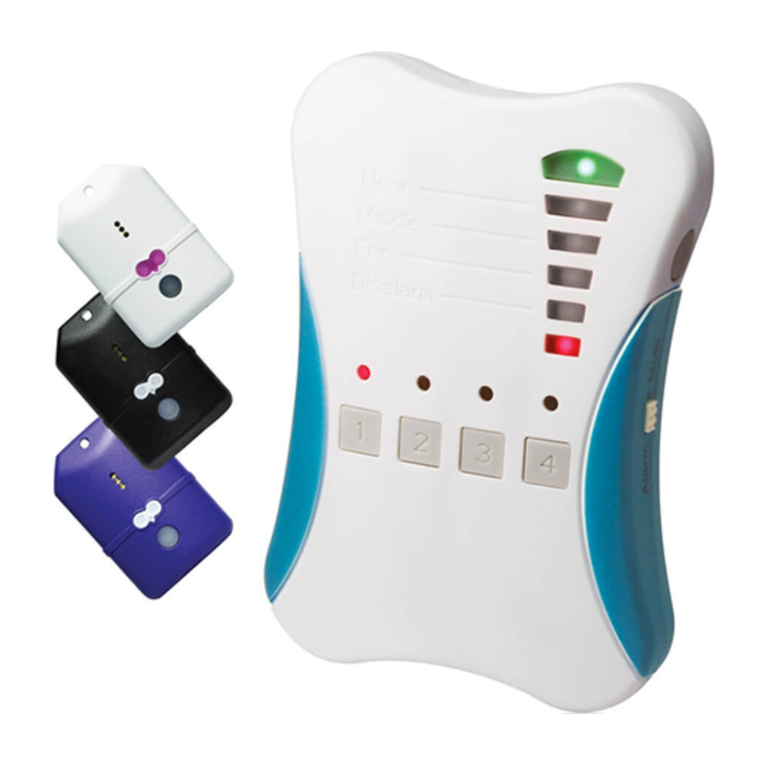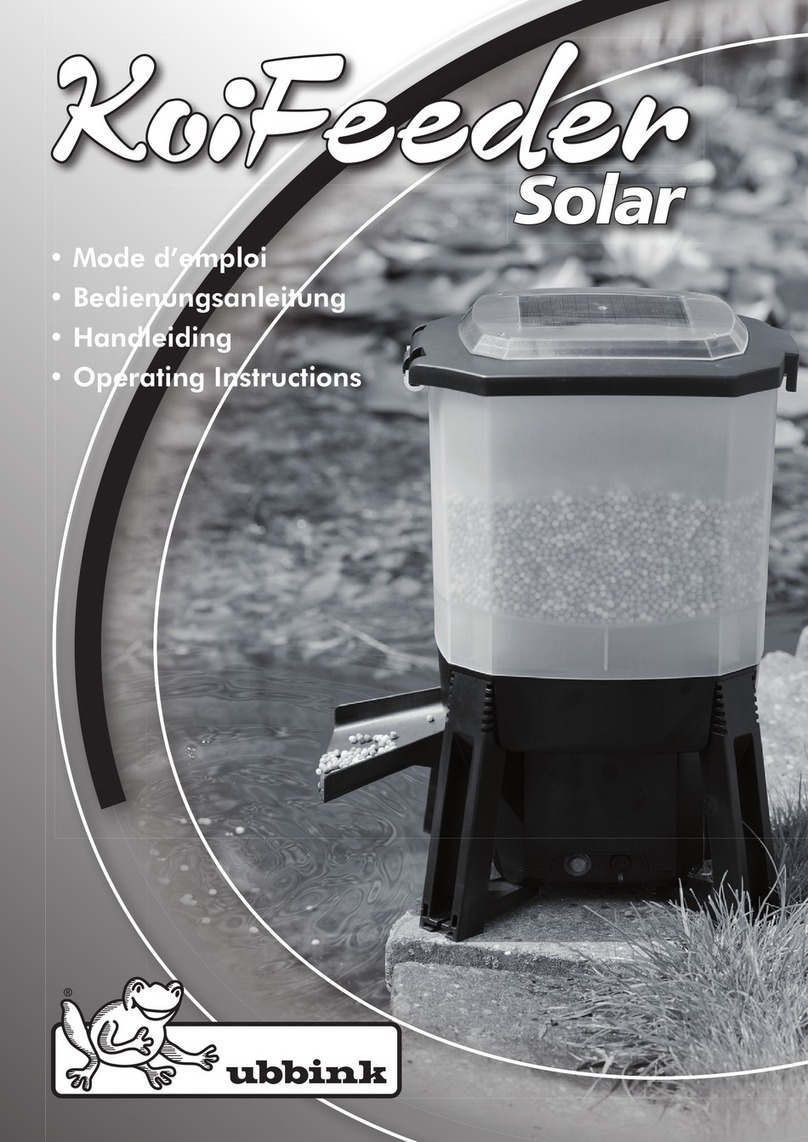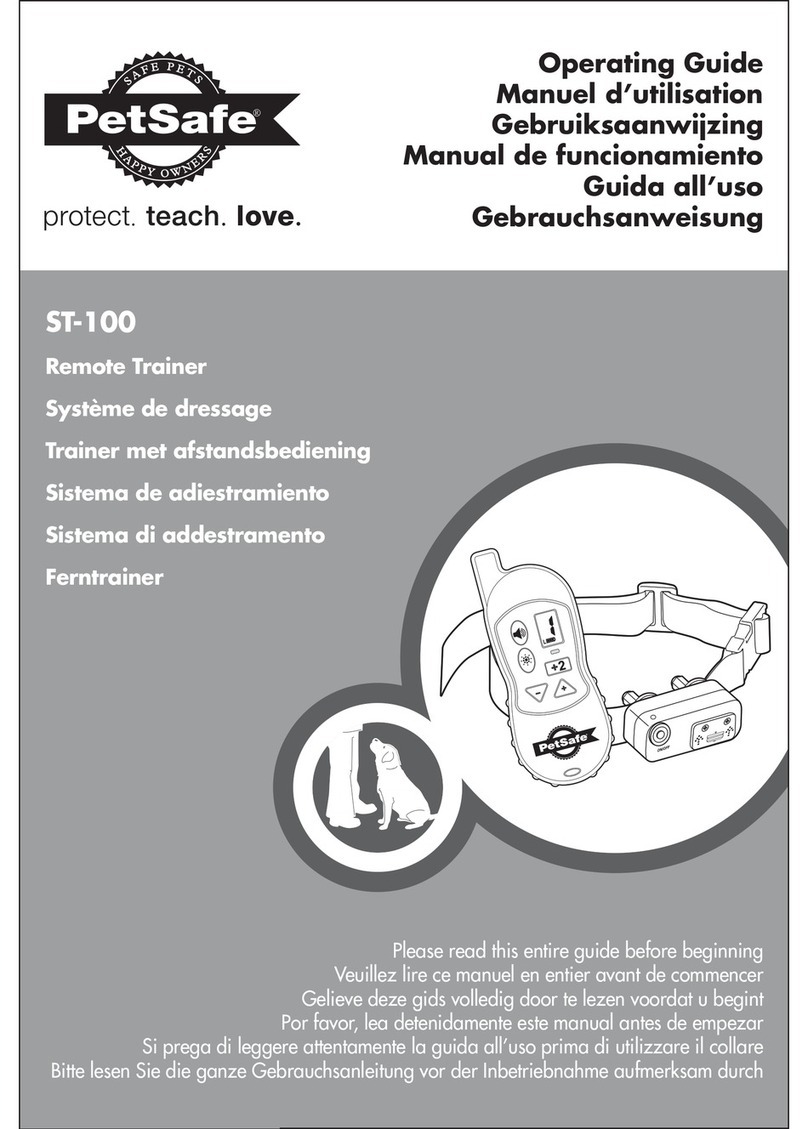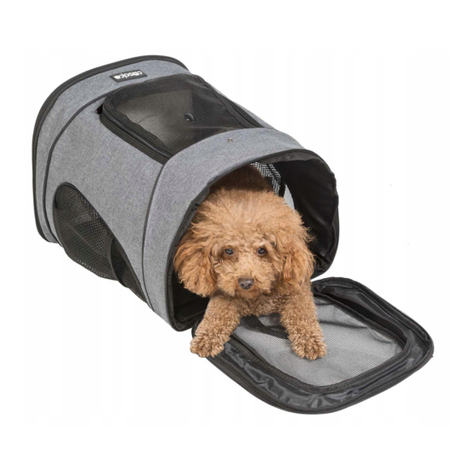Nasco Life/form LF01155U User manual

HEALTHCARE
Advanced Sanitary
CPR Dog
LF01155U
INSTRUCTION MANUAL
WARNING: Products may contain dry natural rubber.
5-Year Warranty
HEALTHCARE
Advanced Sanitary
CPR Dog
LF01155U
INSTRUCTION MANUAL
WARNING: Products may contain dry natural rubber.
5-Year Warranty
HC190001INM9.indd 1-2 1/16/19 8:44 AM

HC190001INM9.indd 3-4 1/16/19 8:44 AM

3 3
LIST OF COMPONENTS
A. Advanced Sanitary CPR Dog
B. 12 cc syringe
C. Nosepiece with Valve (10)
D. Disposable Lower Airway (2)
E. Small White Towelette
F. Butterfly Set
G. Tube of Lubrication Jelly, 4 oz.
H. 6.0 mm Tracheal Tube
I. 500 ml Fluid Supply Bags (2)
J. Control Box with AC adapter
K. Pint Bottle with Blood Powder
L. Soft Carry Bag
L.
ABOUT THE Life/form®CPR DOG AIRWAY SYSTEM
The user-friendly Advanced Sanitary CPR Dog makes canine life support training easy. The
Advanced Sanitary CPR Dog adds electronic monitoring for CPR, as well as an IV foreleg.
K.
A.
C.
D.
E.
F.
G.
H.
I.
J.
B.
LIST OF COMPONENTS
A. Advanced Sanitary CPR Dog
B. 12 cc syringe
C. Nosepiece with Valve (10)
D. Disposable Lower Airway (2)
E. Small White Towelette
F. Butterfly Set
G. Tube of Lubrication Jelly, 4 oz.
H. 6.0 mm Tracheal Tube
I. 500 ml Fluid Supply Bags (2)
J. Control Box with AC adapter
K. Pint Bottle with Blood Powder
L. Soft Carry Bag
L.
ABOUT THE Life/form®CPR DOG AIRWAY SYSTEM
The user-friendly Advanced Sanitary CPR Dog makes canine life support training easy. The
Advanced Sanitary CPR Dog adds electronic monitoring for CPR, as well as an IV foreleg.
K.
A.
C.
D.
E.
F.
G.
H.
I.
J.
B.
HC190001INM9.indd 5-6 1/16/19 8:44 AM

4 4
SETTING UP THE AIRWAY
1. The CPR Dog comes with the disposable lower airway already installed. (See Figure 1.)
Before use: Remove the soft black nose from the valve stem and wash in mild detergent
and water. Sanitize in a bleach solution according to CDC guidelines. Rinse well, dry, and
reassemble.
2. To begin training, simply position your face shield (not included) over the dog’s muzzle
and push the valve end of the nosepiece through the shield into the white fitting in the
muzzle. If necessary, cut a small X in the shield through which to fit the nosepiece.
(See Figure 2.)
Note: The use of a face shield is recommended to prevent direct mouth contact with
the fur.
3. After use: Noses and valves should be discarded. Any attempts at cleaning or disinfecting
for repeated re-use are done at the customer’s own risk.
Muzzle Fur Folds Over Airway
Face Shield
Figure 2
Zipper
REPLACING THE AIRWAY
1. Remove the nosepiece.
2. Open the zipper along the dog’s back
far enough to fold back the fur and
expose the airway. (See Figure 3.)
Figure 3
Lung
Exhaust
Tubing
Nosepiece
with Valve
Fitting
Valve
Disposable Lower Airway
Figure 1
Actual product may vary slightly from photo. Nasco reserves the right to change product
color, materials, supplies, or function as needed.
SETTING UP THE AIRWAY
1. The CPR Dog comes with the disposable lower airway already installed. (See Figure 1.)
Before use: Remove the soft black nose from the valve stem and wash in mild detergent
and water. Sanitize in a bleach solution according to CDC guidelines. Rinse well, dry, and
reassemble.
2. To begin training, simply position your face shield (not included) over the dog’s muzzle
and push the valve end of the nosepiece through the shield into the white fitting in the
muzzle. If necessary, cut a small X in the shield through which to fit the nosepiece.
(See Figure 2.)
Note: The use of a face shield is recommended to prevent direct mouth contact with
the fur.
3. After use: Noses and valves should be discarded. Any attempts at cleaning or disinfecting
for repeated re-use are done at the customer’s own risk.
Muzzle Fur Folds Over Airway
Face Shield
Figure 2
Zipper
REPLACING THE AIRWAY
1. Remove the nosepiece.
2. Open the zipper along the dog’s back
far enough to fold back the fur and
expose the airway. (See Figure 3.)
Figure 3
Lung
Exhaust
Tubing
Nosepiece
with Valve
Fitting
Valve
Disposable Lower Airway
Figure 1
Actual product may vary slightly from photo. Nasco reserves the right to change product
color, materials, supplies, or function as needed.
HC190001INM9.indd 7-8 1/16/19 8:44 AM

5 5
Figure 4
USING THE ELECTRONIC MONITOR
1. Remove the battery cover from the control box and install the 9V battery. (See Figure 5.)
2. Replace the battery cover.
3. The manikin also comes with an AC/DC power adapter for use when an outlet is
available.
Note: When using AC/DC adapter, remove the battery from the control box. When used
together, the battery will get hot, possibly damaging the control box.
4. Connect the CPR Dog to the control box by snapping the two connectors together.
(See Figure 6.)
Note: The dog should be disconnected from the control box when not in use, especially if
the battery is installed. The position sensor may be easily activated during storage, thus
draining the battery.
Figure 5
3. Fold back the fur on the top of the muzzle.
4. Remove and discard the entire disposable lower airway.
5. Replace the ribcage over the lung. Snap the new system into place, starting at the nose
end, making sure that the lung lies flat against the chest.
6. Feed the exhaust tubing out the hole in the dog’s back. (See Figure 4.)
7. Replace the muzzle and body fur and close the zipper.
Figure 4
USING THE ELECTRONIC MONITOR
1. Remove the battery cover from the control box and install the 9V battery. (See Figure 5.)
2. Replace the battery cover.
3. The manikin also comes with an AC/DC power adapter for use when an outlet is
available.
Note: When using AC/DC adapter, remove the battery from the control box. When used
together, the battery will get hot, possibly damaging the control box.
4. Connect the CPR Dog to the control box by snapping the two connectors together.
(See Figure 6.)
Note: The dog should be disconnected from the control box when not in use, especially if
the battery is installed. The position sensor may be easily activated during storage, thus
draining the battery.
Figure 5
3. Fold back the fur on the top of the muzzle.
4. Remove and discard the entire disposable lower airway.
5. Replace the ribcage over the lung. Snap the new system into place, starting at the nose
end, making sure that the lung lies flat against the chest.
6. Feed the exhaust tubing out the hole in the dog’s back. (See Figure 4.)
7. Replace the muzzle and body fur and close the zipper.
HC190001INM9.indd 9-10 1/16/19 8:44 AM

6 6
• Adequate airway pressure via endotracheal (NOT mouth-to-nose) ventilation will
activate the “correct ventilation” light on the control box.
• Appropriate hand placement on the chest will activate the “correct position” light.
• Appropriate chest pressure will activate the “correct compression” light.
• The red “error” light or optional audio signal indicates excessive chest pressure.
TRAINING WITH THE Life/form®CPR DOG
CPR should always be performed from the back of the dog with the animal lying on its right
side (left side UP). Place the dog on a firm, nonslip surface.
Mouth-to Nose Ventilation
Clamp the dog’s mouth shut with both hands and blow gently into the nose. Watch for chest
to rise. Do not over-inflate. The “correct ventilation” light on the control box will not activate
during mouth-to-nose ventilation.
Endotracheal Ventilation
Establish an airway by inserting a 6 mm or 6.5 mm lubricated cuffed endotracheal tube into
the simulated trachea at the back of the throat. The cuff on the ET tube must be inflated with
a 12 cc syringe. The “correct ventilation” light on the control box will illuminate with proper
ventilation. Chest rise is visible only with the mouth-to-nose method.
Chest Compression
Place your hands on the dog’s chest just behind the shoulder, at the point where the left elbow
would meet the body if the leg were pulled backward. Use the heel of your hand to activate the
position light. Compressions and ventilations should be performed according to prescribed
standards (current guidelines). Avoid excessive pressure, as this may damage the trainer.
Resuscitation may be practiced with one person or two, with one performing compressions
while the other ventilates.
Figure 6
• Adequate airway pressure via endotracheal (NOT mouth-to-nose) ventilation will
activate the “correct ventilation” light on the control box.
• Appropriate hand placement on the chest will activate the “correct position” light.
• Appropriate chest pressure will activate the “correct compression” light.
• The red “error” light or optional audio signal indicates excessive chest pressure.
TRAINING WITH THE Life/form®CPR DOG
CPR should always be performed from the back of the dog with the animal lying on its right
side (left side UP). Place the dog on a firm, nonslip surface.
Mouth-to Nose Ventilation
Clamp the dog’s mouth shut with both hands and blow gently into the nose. Watch for chest
to rise. Do not over-inflate. The “correct ventilation” light on the control box will not activate
during mouth-to-nose ventilation.
Endotracheal Ventilation
Establish an airway by inserting a 6 mm or 6.5 mm lubricated cuffed endotracheal tube into
the simulated trachea at the back of the throat. The cuff on the ET tube must be inflated with
a 12 cc syringe. The “correct ventilation” light on the control box will illuminate with proper
ventilation. Chest rise is visible only with the mouth-to-nose method.
Chest Compression
Place your hands on the dog’s chest just behind the shoulder, at the point where the left elbow
would meet the body if the leg were pulled backward. Use the heel of your hand to activate the
position light. Compressions and ventilations should be performed according to prescribed
standards (current guidelines). Avoid excessive pressure, as this may damage the trainer.
Resuscitation may be practiced with one person or two, with one performing compressions
while the other ventilates.
Figure 6
HC190001INM9.indd 11-12 1/16/19 8:44 AM

7 7
ABOUT THE INTRAVENOUS LEG
The Life/form®CPR Dog IV leg has been designed to provide a realistic experience in
locating the cephalic vein of the right foreleg. Students may then practice needle insertion for
blood sampling or IV administration. For longer vein life, always use a small needle (22-gauge
or smaller). Never use dull or burred needles. The vein tubing may be easily replaced when it is
no longer usable.
Setting Up the IV Leg
The Life/form®CPR Dog IV leg comes with the supplies needed to perform most procedures.
To perform intravenous infusions, use distilled water or simulated blood. To set up the trainer
for a blood draw:
1. Add distilled water to the pint bottle with blood powder and mix well. Handle the blood
carefully, as it will stain skin and fabric.
2. Close the clamp on IV fluid supply bag A and fill to 500 ml.
Figure 7
Pulse
The femoral artery tubing is located in
the left hind leg. By manipulating the
squeeze bulb, the instructor can simulate
a variety of heart rates and conditions.
(See Figure 7.)
Figure 8
ABOUT THE INTRAVENOUS LEG
The Life/form®CPR Dog IV leg has been designed to provide a realistic experience in
locating the cephalic vein of the right foreleg. Students may then practice needle insertion for
blood sampling or IV administration. For longer vein life, always use a small needle (22-gauge
or smaller). Never use dull or burred needles. The vein tubing may be easily replaced when it is
no longer usable.
Setting Up the IV Leg
The Life/form®CPR Dog IV leg comes with the supplies needed to perform most procedures.
To perform intravenous infusions, use distilled water or simulated blood. To set up the trainer
for a blood draw:
1. Add distilled water to the pint bottle with blood powder and mix well. Handle the blood
carefully, as it will stain skin and fabric.
2. Close the clamp on IV fluid supply bag A and fill to 500 ml.
Pulse
The femoral artery tubing is located in
the left hind leg. By manipulating the
squeeze bulb, the instructor can simulate
a variety of heart rates and conditions.
(See Figure 7.)
Figure 8
HC190001INM9.indd 13-14 1/16/19 8:45 AM

8 8
3. Attach the tubing from the bag to the inlet tubing of the leg. Hang bag A, adjusting
height as needed. (Fluid supply stand pictured, sold separately, LF01022U.)
4. Attach the outlet tubing to the empty fluid supply bag B.
5. Close the cap to bag B and place at, or slightly below, the level of the dog.
6. Pressurize the system by opening all the clamps until the fluid in the outlet tubing runs free
of bubbles, then close the fluid supply bag B clamp. (See Figure 8.)
7. The venous system is now charged with pressurized blood and is ready for use. Use only
distilled water to prepare the site. Blood will be aspirated when the vein is punctured
correctly.
Preparing for IV Infusion
1. Prepare your IV bag (sold separately, LF01130U) and solution (distilled water recom-
mended).
2. Have the leg set up as described in the preceding section (“Setting Up the IV Leg”).
3. Insert the butterfly needle into the vein. Flashback will indicate proper insertion.
4. Close the clamp on fluid supply bag A. Hang the IV bag and connect it to the butterfly
set. Open the clamp to fluid supply bag B. Infusion fluid should flow into the vein and out
into IV bag B. Control the rate of flow by adjusting the clamp on the IV bag.
Note: Fluid supply bags A and B may be switched as needed to maintain adequate
pressurization of the system.
Injections
Subcutaneous or intramuscular injections may be administered anywhere on the dog.
Air is the recommended injectant. If you prefer to inject liquid, use only distilled water.
Be aware that moisture will then be introduced into the interior of the foam body and will
evaporate very slowly, especially with intramuscular injections. Avoid puncturing the lung or
airway system.
TROUBLESHOOTING
1. Make sure all clamps have been opened or closed correctly.
2. Check tubing for kinks or other blockage.
3. Constant clamp pressure can cause the tubing to pinch shut, even after the clamp is loos-
ened. Slide the clamp to a new position and work the tubing with your fingers to restore
the lumen.
4. Avoid overfilling the bags or hanging them too high, as this will increase the pressure in
the system, resulting in leaks.
5. Forcing fluid through the system with a large syringe may remove clogs.
6. If no blockage is visible, remove the leg fur and examine the tubing for kinks.
3. Attach the tubing from the bag to the inlet tubing of the leg. Hang bag A, adjusting
height as needed. (Fluid supply stand pictured, sold separately, LF01022U.)
4. Attach the outlet tubing to the empty fluid supply bag B.
5. Close the cap to bag B and place at, or slightly below, the level of the dog.
6. Pressurize the system by opening all the clamps until the fluid in the outlet tubing runs free
of bubbles, then close the fluid supply bag B clamp. (See Figure 8.)
7. The venous system is now charged with pressurized blood and is ready for use. Use only
distilled water to prepare the site. Blood will be aspirated when the vein is punctured
correctly.
Preparing for IV Infusion
1. Prepare your IV bag (sold separately, LF01130U) and solution (distilled water recom-
mended).
2. Have the leg set up as described in the preceding section (“Setting Up the IV Leg”).
3. Insert the butterfly needle into the vein. Flashback will indicate proper insertion.
4. Close the clamp on fluid supply bag A. Hang the IV bag and connect it to the butterfly
set. Open the clamp to fluid supply bag B. Infusion fluid should flow into the vein and out
into IV bag B. Control the rate of flow by adjusting the clamp on the IV bag.
Note: Fluid supply bags A and B may be switched as needed to maintain adequate
pressurization of the system.
Injections
Subcutaneous or intramuscular injections may be administered anywhere on the dog.
Air is the recommended injectant. If you prefer to inject liquid, use only distilled water.
Be aware that moisture will then be introduced into the interior of the foam body and will
evaporate very slowly, especially with intramuscular injections. Avoid puncturing the lung or
airway system.
TROUBLESHOOTING
1. Make sure all clamps have been opened or closed correctly.
2. Check tubing for kinks or other blockage.
3. Constant clamp pressure can cause the tubing to pinch shut, even after the clamp is loos-
ened. Slide the clamp to a new position and work the tubing with your fingers to restore
the lumen.
4. Avoid overfilling the bags or hanging them too high, as this will increase the pressure in
the system, resulting in leaks.
5. Forcing fluid through the system with a large syringe may remove clogs.
6. If no blockage is visible, remove the leg fur and examine the tubing for kinks.
HC190001INM9.indd 15-16 1/16/19 8:45 AM

9 9
Replacing the Vein Tubing
1. Remove the leg fur.
2. Remove the old tubing from the leg core channel and discard.
3. Snap the new tubing into place, making sure that it is firmly seated in the channel.
(See Figure 8.) Make sure it isn’t pinched or kinked at any point, especially where it angles
upward at the shoulder.
4. Unzip the body fur part way and feed the inlet tube through the right leg hole and out at
the back of the face. Reattach the fur and all clamps and fittings.
Caring for the IV Leg
1. After each class, drain the blood and return it to the bottle for storage, tightly capped.
2. Flush the system thoroughly by running clear water through it into a sink or basin.
3. Open all clamps and drain excess water.
4. Use only Life/form®Replacement Veins, as they are specially treated to be compatible
with the leg core material.
CARE OF THE TRAINER
Cleaning the Fur
The body fur may be unzipped and removed for cleaning.
1. Nasco recommends hand washing in cool water with a few drops of mild soap or deter-
gent. Rinse thoroughly.
2. Roll in a towel to remove excess water, then allow to air dry. Gently brush fur if desired.
A small amount of “shedding” is normal.
3. The fur on the face and legs may be cleaned by rubbing with a damp cloth. Do not
immerse the dog in water. Never use cleaning fluids or solvents.
REPLACEMENT PARTS
LF01022U Fluid Supply Stand
LF01130U 500 ml Fluid Supply Bag
LF01157U Muzzle Replacement, pkg. of 6 (2009 and older)
LF01158U Disposable Lower Airways, pkg. of 10
LF01164U Disposable Nosepieces, pkg. of 10
LF01179U Replacement Veins, pkg. of 3
Replacing the Vein Tubing
1. Remove the leg fur.
2. Remove the old tubing from the leg core channel and discard.
3. Snap the new tubing into place, making sure that it is firmly seated in the channel.
(See Figure 8.) Make sure it isn’t pinched or kinked at any point, especially where it angles
upward at the shoulder.
4. Unzip the body fur part way and feed the inlet tube through the right leg hole and out at
the back of the face. Reattach the fur and all clamps and fittings.
Caring for the IV Leg
1. After each class, drain the blood and return it to the bottle for storage, tightly capped.
2. Flush the system thoroughly by running clear water through it into a sink or basin.
3. Open all clamps and drain excess water.
4. Use only Life/form®Replacement Veins, as they are specially treated to be compatible
with the leg core material.
CARE OF THE TRAINER
Cleaning the Fur
The body fur may be unzipped and removed for cleaning.
1. Nasco recommends hand washing in cool water with a few drops of mild soap or deter-
gent. Rinse thoroughly.
2. Roll in a towel to remove excess water, then allow to air dry. Gently brush fur if desired.
A small amount of “shedding” is normal.
3. The fur on the face and legs may be cleaned by rubbing with a damp cloth. Do not
immerse the dog in water. Never use cleaning fluids or solvents.
REPLACEMENT PARTS
LF01022U Fluid Supply Stand
LF01130U 500 ml Fluid Supply Bag
LF01157U Muzzle Replacement, pkg. of 6 (2009 and older)
LF01158U Disposable Lower Airways, pkg. of 10
LF01164U Disposable Nosepieces, pkg. of 10
LF01179U Replacement Veins, pkg. of 3
HC190001INM9.indd 17-18 1/16/19 8:45 AM

Copyright © 2000 HC190001INM9
ONLINE: NascoHealthcare.com
EMAIL: [email protected]
PHONE: 1.800.431.4310
ADDRESS: 901 Janesville Ave.
Fort Atkinson, WI 53538
HEALTHCARE
Other Available Products
LF01156U
C27992N Pet Emergency First Aid for Cats, DVD
C27993N Pet Emergency First Aid for Dogs, DVD
C30738N Pet Emergency First Aid for Working Dogs, DVD
LF01016U Canine IV Leg
LF01156U Basic CPR Dog
SB28954U TUTOR MS — Data Selector (Sounds)
SB48099U Canine Heart & Breath Sounds Complete Set
SB48100U Canine Heart Sounds Module
SB48101U Canine Breath Sounds
C27992N C27993N C30738N
Copyright © 2000 HC190001INM9
ONLINE: NascoHealthcare.com
EMAIL: [email protected]
PHONE: 1.800.431.4310
ADDRESS: 901 Janesville Ave.
Fort Atkinson, WI 53538
HEALTHCARE
Other Available Products
LF01156U
C27992N Pet Emergency First Aid for Cats, DVD
C27993N Pet Emergency First Aid for Dogs, DVD
C30738N Pet Emergency First Aid for Working Dogs, DVD
LF01016U Canine IV Leg
LF01156U Basic CPR Dog
SB28954U TUTOR MS — Data Selector (Sounds)
SB48099U Canine Heart & Breath Sounds Complete Set
SB48100U Canine Heart Sounds Module
SB48101U Canine Breath Sounds
C27992N C27993N C30738N
HC190001INM9.indd 19-20 1/16/19 8:45 AM
Other manuals for Life/form LF01155U
1
Table of contents
